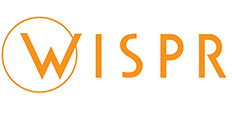The instrument is calibrated at the component and subassembly level as well as “end-to-end” at the instrument unit level. Optical tests will ensure that the baffle surfaces and optical components meet requirements for efficiency, imaging and scattered light. The APS detector is calibrated for quantum efficiency, dynamic range, resolution, and noise. The instrument performance is tested/characterized in the dedicated NRL coronagraph test facilities that contain an 11 m beamline optical test chamber and Class 100 cleanroom. Additional baffling is added to the chamber to allow end-to-end stray light testing of stray light to ∼10−15 B/Bsun, similar to the successful SECCHI/HI end-to-end stray light test. This test was the first test to successfully achieve this level of sensitivity. The chamber is equipped with collimating optics, a precision instrument pointing table and necessary light sources. The laboratory is equipped with optical benches, theodolites, alignment telescopes, optical flats, and light sources. Component transmission and reflectivity are characterized using a Cary spectrophotometer and spectroradiometer. End-to-end calibrations performed under vacuum include: vignetting, radiometric calibration (responsivity), image quality, wavelength range, stray light and flat field. End-to-end calibration activities use the instrument electronics in the flight configuration. All calibrations are directly traceable to NIST using secondary standards. The laboratory calibration and image quality measurements are validated on-orbit using a set of standard stars similar to the procedures we use on the SOHO/LASCO and STEREO/SECCHI instruments. The final calibration using the standard stars will be accurate to ∼3 %, exceeding the 20 % absolute calibration requirement (Thernisien et al. 2006).
WISPR Pub Number 1
